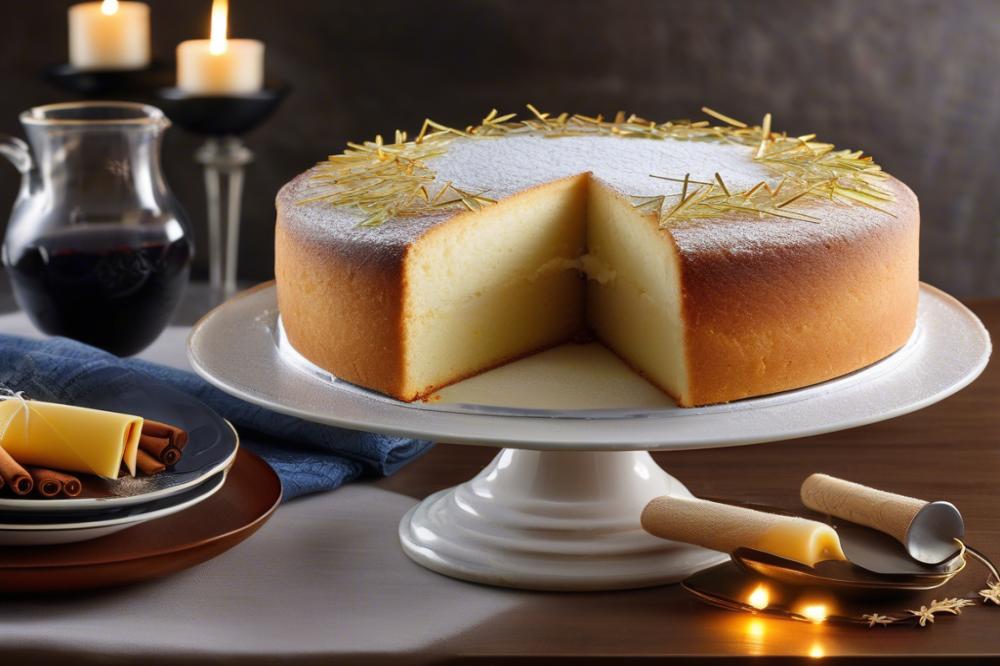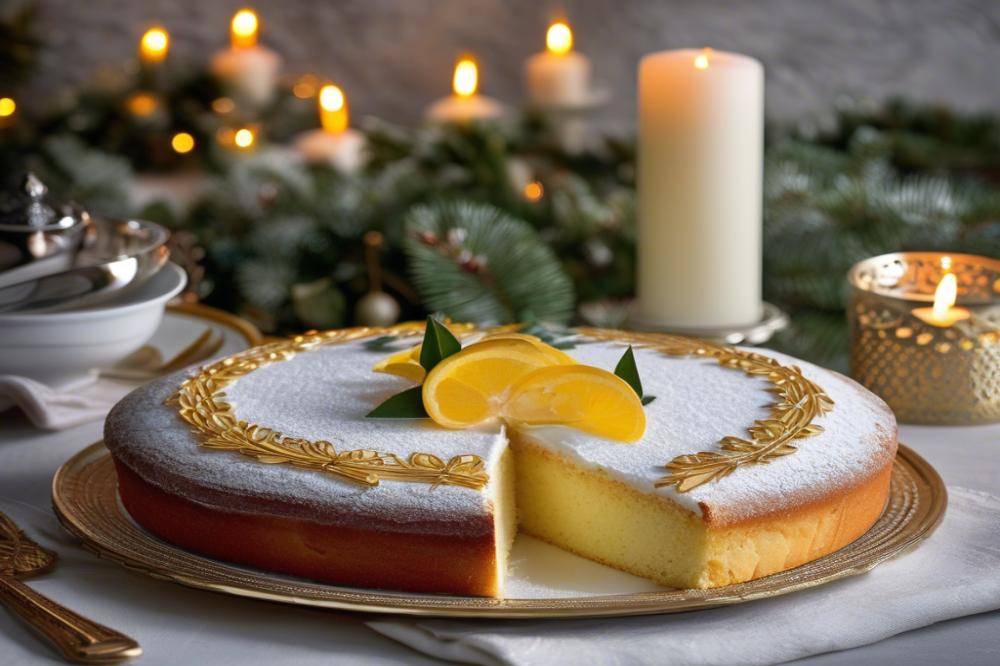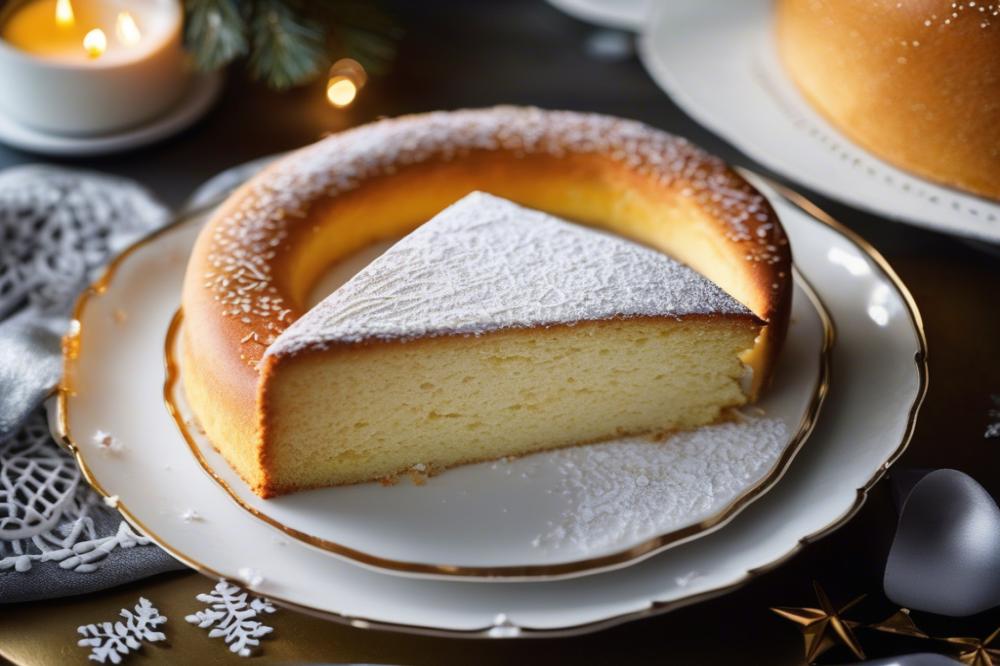The Secrets to Baking Vasilopita Greek New Year’s Cake
Overview of Vasilopita as a Traditional Greek New Year’s Cake
Vasilopita is not just a cake; it symbolizes hope and renewal. It has deep roots in Greek traditions, celebrated at the start of each new year. This cake is typically baked with a hidden coin inside, which plays a vital role in the festivities. When families gather to cut the cake, each slice represents blessings for the coming year. Families believe that finding the coin brings good luck and prosperity to its discoverer.
Significance of Vasilopita in New Year Celebrations
In Greek culture, New Year customs are rich with meaning. The cake holds significant symbolism in these traditions. Baking is often accompanied by various rituals that make the event special. Families come together to prepare this festive dessert, creating bonds over shared recipes and stories. As the clock strikes midnight, slicing Vasilopita becomes a cherished moment. This cake is more than just food; it is a celebration of life, hope, and unity.
Importance in Greek Culture and Family Gatherings
For many, Vasilopita marks a way to connect with one’s heritage. Family gatherings take on a unique atmosphere during these celebrations. People reminisce about past New Year’s celebrations and the joy they bring. Each hole made in the cake during preparation signifies a wish for health, happiness, and fortune. baking tips often get passed down through generations, ensuring that everyone can enjoy this cultural staple. While sharing stories and laughter, the importance of family shines bright. In this way, the Greek New Year’s Cake acts as a delicious reminder of love and togetherness.
Understanding Vasilopita

History and origin of Vasilopita
The origins of Vasilopita date back many centuries. Its roots are deeply entrenched in Greek culture and traditions. People often connect it to St. Basil, a beloved saint known for his kindness. According to legend, he would secretly leave gifts for the poor. This act of generosity inspired the baking of this sweet cake during New Year celebrations. As families gather to mark the arrival of the new year, they share this delicious treat, remembering its rich history.
Symbolism associated with the cake
Vasilopita is not just a cake; it carries significant meaning. Traditionally, it symbolizes good fortune and blessings for the year ahead. The cake often contains a hidden coin. Whoever finds the coin is said to have good luck throughout the year. This fun coin hiding adds excitement to family gatherings. Every slice holds the promise of prosperity and joy, connecting everyone to generations past. The cake also represents unity and togetherness, reminding families of the importance of love and connection.
Connection to New Year customs and traditions
Each New Year’s Day, Greeks partake in various customs, and Vasilopita plays a central role. Families bake the cake with cherished recipes passed down through generations. This festive dessert often features a cross on top, symbolizing faith and hope. While celebrating, friends and relatives gather to share stories and laughter. Old traditions emphasize the importance of community, making it a time to strengthen bonds. The act of cutting the cake is like sharing blessings among loved ones, reinforcing ties that bind. As you delve into baking tips, consider the joy that this cake brings to every new year celebration.
Ingredients and Preparation

List of Ingredients with Quantities
To bake a delicious Vasilopita, gather these ingredients:
- Flour: 3 cups
- Sugar: 1 cup
- Butter: 1 cup (softened)
- Eggs: 4 large
- Milk: 1 cup
- Baking powder: 1 tablespoon
- Vanilla extract: 1 teaspoon
- Zest of one lemon
- Powdered sugar for decoration
Instructions for Baking Vasilopita
The preparation might seem simple, but it holds much symbolism in Greek culture, especially during New Year celebrations. Start by preheating your oven to 350°F (175°C). Grease and flour a round cake pan, ideally one that’s about 10 inches in diameter. This step prevents sticking later.
Next, in a large bowl, cream together the softened butter and sugar until the mixture is light and fluffy. Each ingredient plays a role in the final texture. Then, add the eggs, mixing well after each addition. Make sure to incorporate them fully for richness.
Combine the milk and vanilla extract in another container. Gradually add this liquid mixture to the creamed butter and sugar. Zest the lemon finely, and fold it into the batter. In a separate bowl, sift the flour and baking powder together. Gently fold the flour mixture into the wet ingredients until just combined. This will help achieve a moist texture.
Pour the batter into the prepared pan, smoothing the top with a spatula. Gently tap the pan on the counter to release air bubbles. In the heart of the cake, hide a coin wrapped in foil. This custom adds a layer of excitement during family gatherings, as finding the coin symbolizes luck for the year.
Bake in the preheated oven for 40-45 minutes or until a toothpick inserted into the center comes out clean. Let the cake cool in the pan for about 10 minutes before transferring it to a wire rack.
Tips for Achieving the Perfect Texture
For a light and fluffy cake, avoid overmixing the batter once you combine the flour. This slight care will prevent a dense outcome. An excellent practice is to sift the flour and baking powder together; this aeration helps in rising. During the cooling phase, resist the urge to slice too soon. Waiting improves the final flavor.
When it’s time for serving, dust the top with powdered sugar for a festive look. This cake is a staple in Greek traditions. Families often gather around the table to cut the Vasilopita together. Sharing it strengthens bonds, making each New Year celebration special.
Pay attention to these baking tips, and you will create a delightful dessert that embodies the spirit of Greek New Year customs. Enjoy the experience as you bake this cake that is more than just a recipe—it’s a celebration of culture and tradition.
Nutritional Information

When considering the caloric content of traditional Greek desserts, Vasilopita plays a significant role. Ingredients like flour, sugar, butter, and eggs contribute to the total calories. For a standard recipe, a slice can range from 250 to 350 calories, depending on portion size and specific proportions. Each ingredient has its role in shaping the overall flavor and texture.
Sugar adds sweetness but also increases calorie count substantially. Most recipes call for around one cup of sugar, bringing in approximately 800 calories alone. Butter, another main ingredient, typically contributes around 700 calories per cup. These fats lend richness to the cake but can be problematic for health-conscious individuals.
Health considerations surrounding sugar and butter are important to keep in mind. High sugar intake can lead to various health issues like obesity and heart diseases. Reducing sugar in recipes can help create a slightly healthier version. Using less butter or substituting it can improve the nutritional profile, too. Techniques like adding yogurt can maintain moisture while cutting down on total fat.
Suggestions for Healthier Alternatives
Many bakers look for ways to tweak traditional recipes. Substituting whole wheat flour for all-purpose flour enhances fiber content. Additionally, alternative sweeteners like honey or maple syrup can provide natural sweetness with a different flavor profile. While these methods retain some of the original sweetness, they can also lower the overall caloric intake.
Engaging in family gatherings during New Year celebrations connects people with their roots. Integrating healthier ingredients into Vasilopita may lead to a delicious twist on a classic. Greek traditions emphasize the symbolism behind the coin hiding. Consider using smaller amounts of traditional ingredients while retaining festive spirit.
Choosing healthier fats, like coconut oil or avocado oil, instead of butter can also be beneficial. These substitutes provide essential nutrients without sacrificing flavor. The recipe can remain a centerpiece during festivities while promoting better eating habits. By using smarter choices, the joy of baking remains intact within Greek culture.
Utilizing these baking tips not only enriches your culinary practices but fosters a sense of well-being. With recipes evolving, the essence of a festive dessert does not have to be compromised. New Year customs deserve delicious treats that everyone can enjoy, even those mindful of their diet.
Baking Tips for Vasilopita

Common mistakes to avoid while baking
Mistakes can happen, especially when baking for special occasions. One frequent error is not measuring ingredients correctly. Baking requires precision. Forgetting to preheat the oven can lead to uneven results. Make it a point to check your oven temperature before placing the cake inside. Using stale ingredients, like old flour or expired baking powder, can ruin the cake’s quality. Always check dates and freshness. Lastly, don’t rush the baking process. Patience is key. Allow the cake to cool completely before slicing. This helps the flavors meld together beautifully.
Best practices for incorporating the coin
Hiding the coin in the cake is a cherished part of the Greek traditions surrounding the New Year. Ideally, you should wrap the coin in aluminum foil. This protects it and keeps it sanitary. Place it in the batter just before pouring it into the cake pan. Avoid letting it touch the sides of the pan, as this could affect its placement in the final product. It is essential to remember where you hid it. Make a note, or share with a family member the coin’s exact spot. Everyone will enjoy the excitement of finding it during the family gatherings.
How to achieve the ideal flavor and texture
For superb flavor, using high-quality ingredients matters. Fresh eggs and unsalted butter can make a significant difference in taste. Incorporate zest from fresh citrus fruits for an added aroma. Almond extract is a great option to elevate the cake’s sweetness. Other recipes might call for milk or yogurt to create a moist texture. Mixing the batter until just combined avoids overworking, which creates a dense cake. Baking at the proper temperature is crucial; a too-hot oven can lead to a crusty exterior and dry inside. To sum it up, balance flavor, moisture, and proper baking techniques for a delightful festive dessert. Paying attention to these aspects honors the symbolism behind this sweet treat, making the New Year celebrations truly special.
Greek Traditions and Festive Customs
Role of Vasilopita in New Year Celebrations
Vasilopita is more than just a cake. It symbolizes the end of one year and the hopeful beginning of another. Baked with care, this festive dessert carries deep cultural significance. Families come together to celebrate in a warm atmosphere full of joy. Recipes vary from region to region, making every version special. Some use orange zest, while others add nuts or spices. The cake represents prosperity and is a cherished part of Greek culture.
Ceremony of Cutting the Cake
Cutting the cake is a memorable moment each New Year. This event often happens after a family meal. The head of the household performs the cutting. Before the knife touches the cake, a prayer is said for blessings in the new year. Each slice is dedicated to different people. Portions are given to Christ, the household, and all family members present. This tradition adds layers to the event, steeped in respect and spirituality.
Family Gatherings and Sharing the Cake
Family gatherings around Vasilopita bring loved ones together. Children eagerly wait to see who finds the coin hidden inside. This suspense adds excitement to the celebration. Sharing the cake encourages togetherness and bond strengthening. People often reminisce about past celebrations during these moments. It becomes a time of laughter and storytelling, enhancing family ties. Each slice shared fosters unity among relatives and friends.
Sharing and Its Implications
The act of sharing the cake reflects generosity and kindness. Whoever finds the hidden coin is believed to have good luck for the year ahead. This belief holds significant meaning for many families. In Greek traditions, it is seen as a blessing. Each piece shared is a reminder of love and connection. New Year customs involve more than just the cake; they celebrate communal living and support. The joy of sharing creates deeper appreciation for one another. With each bite, families embrace not only their culture but also the essence of community.
Embracing the Tradition of Vasilopita
The celebration of New Year’s in Greek culture holds a special place in people’s hearts, and Vasilopita is at the center of this festive occasion. This cake represents the blessings of the new year and serves as a reminder of love and family. When the cake is cut, the hidden coin reveals the person who will have good fortune for the year ahead. This ritual is not just about luck; it reinforces bonds among family and friends.
Making Vasilopita allows families to come together in the kitchen and share in the joy of preparation. This simple act can deepen connections and create cherished memories for everyone involved. Baking tips passed down through generations often provide useful guidance for achieving the perfect texture and flavor in this delightful cake. Each family might have its own twist to the recipe, making it an even more personal tradition.
Carrying on these Greek traditions in our homes can spark a sense of belonging. As families gather around the table, stories can be shared while savoring the sweet aroma of the cake. It’s a wonderful opportunity to teach younger generations about their heritage and the significance of rituals like this one.
Thinking about how you will celebrate this coming New Year? Consider baking and sharing this beloved cake with those you care about. It may just bring warmth and hope to your celebrations. In a world that often feels rushed, taking time to create and share Vasilopita can remind us of what truly matters: connection and love. As the New Year approaches, let this tradition be a beacon of joy and unity in your life.



